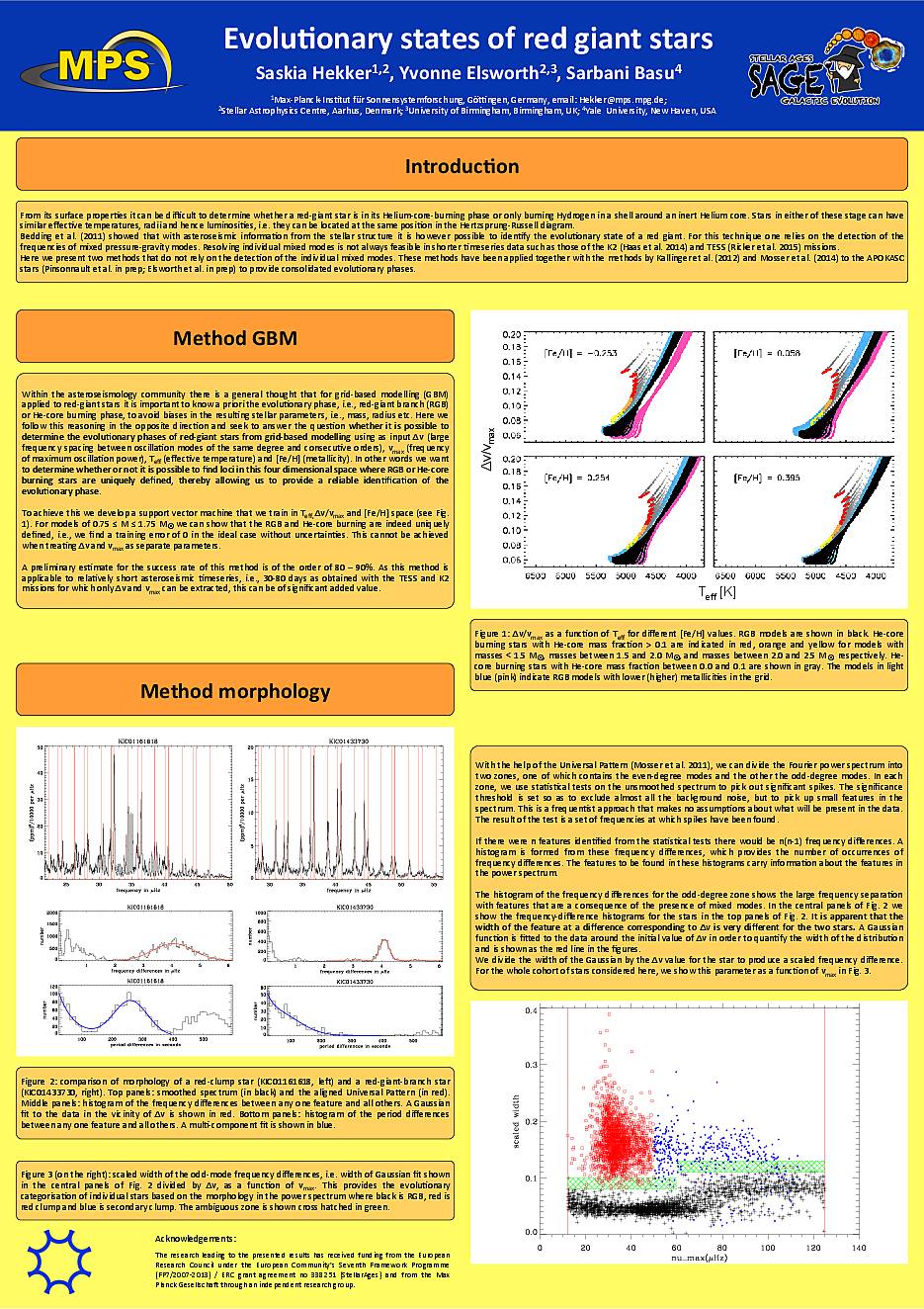Evolutionary states of red-giants stars: how to obtained them from “short” time series data from K2 and Tess
Affiliation
Max Planck Institute for Solar System Research
Main category
Natural Sciences (Astrophysics and Astrononmy)
Abstract
From its surface proper.es it can be difficult to determine whether a red-giant star is in its Helium-core-burning phase or only burning Hydrogen in a shell around an inert Helium core. Stars in either of these stage can have similar effec.ve temperatures, radii and hence luminosi.es, i.e. they can be located at the same posi.on in the Hertzsprung-Russell diagram.
Bedding et al. (2011) showed that with asteroseismic informa.on from the stellar structure it is however possible to iden.fy the evolu.onary state of a red giant. For this technique one relies on the detec.on of the frequencies of mixed pressure-gravity modes. Resolving individual mixed modes is not always feasible in shorter .meseries data such as those of the K2 (Haas et al. 2014) and TESS (Ricker et al. 2015) missions.
Here we present two methods that do not rely on the detec.on of the individual mixed modes. These methods have been applied together with the methods by Kallinger et al. (2012) and Mosser et al. (2014) to the APOKASC stars (Pinsonnault et al. in prep; Elsworth et al. in prep) to provide consolidated evolu.onary phases.
Do you have problems viewing the pdf-file? Download poster
here
If the poster contains inappropriate content, please
report the poster. You will be redirected to the landing page.
